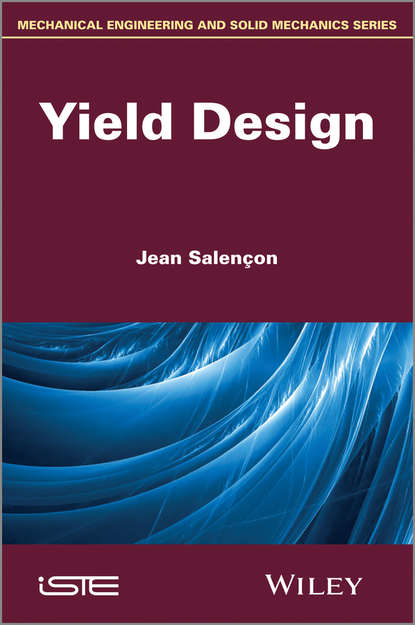
Yield Design скачать fb2
Jean Salencon - Yield Design краткое содержание
Since the middle of the 20th Century yield design approaches have been identified with the lower and upper bound theorem of limit analysis theory – a theory associated with perfect plasticity. This theory is very restrictive regarding the applicability of yield design approaches, which have been used for centuries for the stability of civil engineering structures. This book presents a theory of yield design within the original “equilibrium/resistance” framework rather than referring to the theories of plasticity or limit analysis; expressing the compatibility between the equilibrium of the considered structure and the resistance of its constituent material through simple mathematical arguments of duality and convex analysis results in a general formulation, which encompasses the many aspects of its implementation to various stability analysis problems. After a historic outline and an introductory example, the general theory is developed for the three-dimensional continuum model in a versatile form based upon simple arguments from the mathematical theory of convexity. It is then straightforwardly transposed to the one-dimensional curvilinear continuum, for the yield design analysis of beams, and the two-dimensional continuum model of plates and thin slabs subjected to bending. Field and laboratory observations of the collapse of mechanical systems are presented along with the defining concept of the multi-parameter loading mode. The compatibility of equilibrium and resistance is first expressed in its primal form, on the basis of the equilibrium equations and the strength domain of the material defined by a convex strength criterion along with the dual approach in the field of potentially safe loads, as is the highlighting of the role implicitly played by the theory of yield design as the fundamental basis of the implementation of the ultimate limit state design (ULSD) philosophy with the explicit introduction of resistance parameters. Contents 1. Origins and Topicality of a Concept. 2. An Introductory Example of the Yield Design Approach. 3. The Continuum Mechanics Framework. 4. Primal Approach of the Theory of Yield Design. 5. Dual Approach of the Theory of Yield Design. 6. Kinematic Exterior Approach. 7. Ultimate Limit State Design from the Theory of Yield Design. 8. Optimality and Probability Approaches of Yield Design. 9. Yield Design of Structures. 10. Yield Design of Plates: the Model. 11. Yield Design of Plates Subjected to Pure Bending. About the Authors Jean Salençon is Emeritus Professor at École polytechnique and École des ponts et chaussées, ParisTech, France. Since 2009 he has been a member of the Administrative Board of CNRS (Paris, France). He has received many awards including the Légion d’Honneur (Commander), Ordre National du Mérite (Officer) and Palmes Académiques (Commander). His research interests include structure analysis, soil mechanics and continuum mechanics.
Чтобы оставить свою оценку и/или комментарий, Вам нужно войти под своей учетной записью или зарегистрироваться



